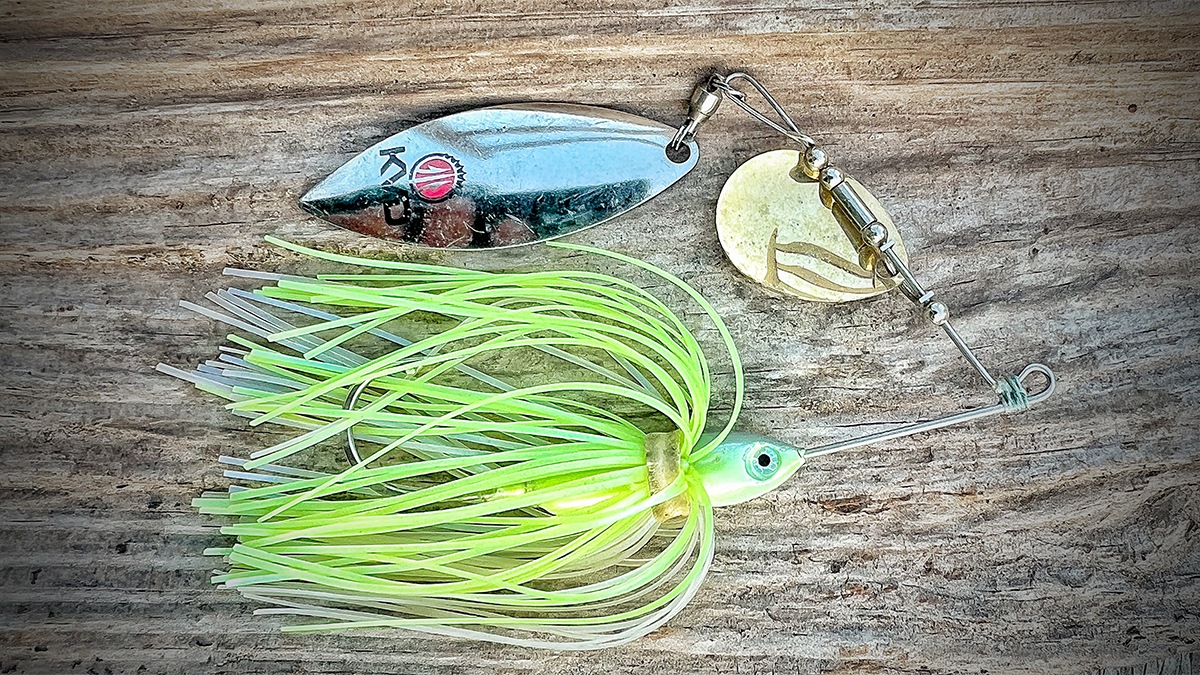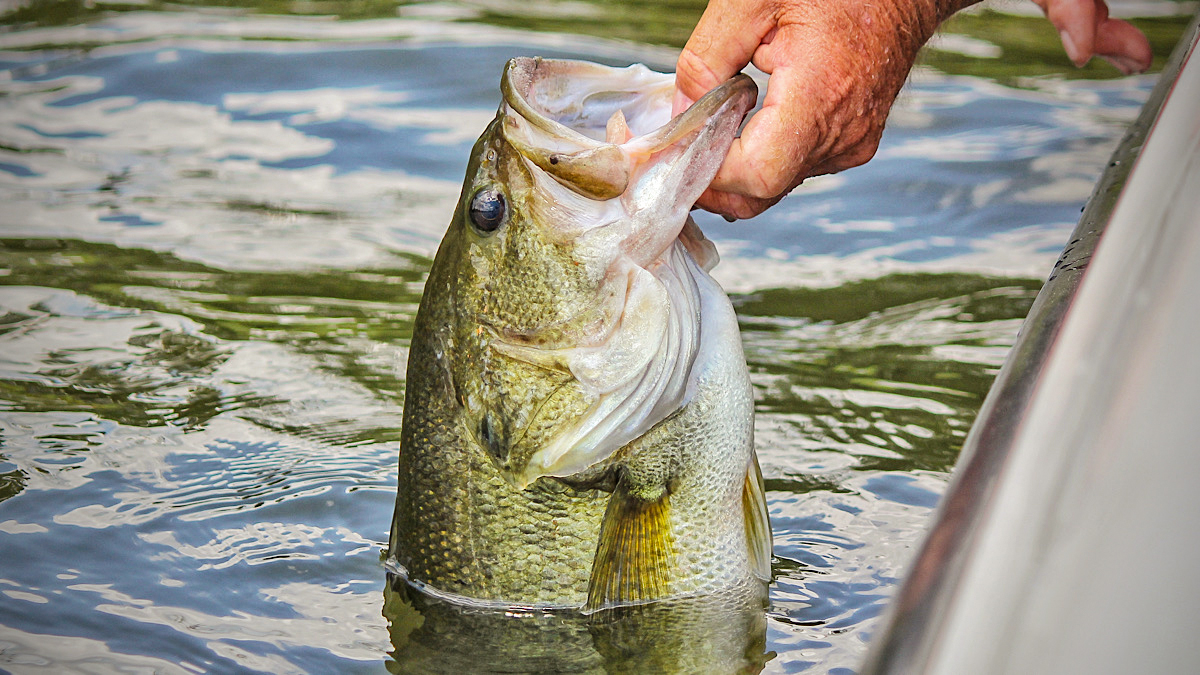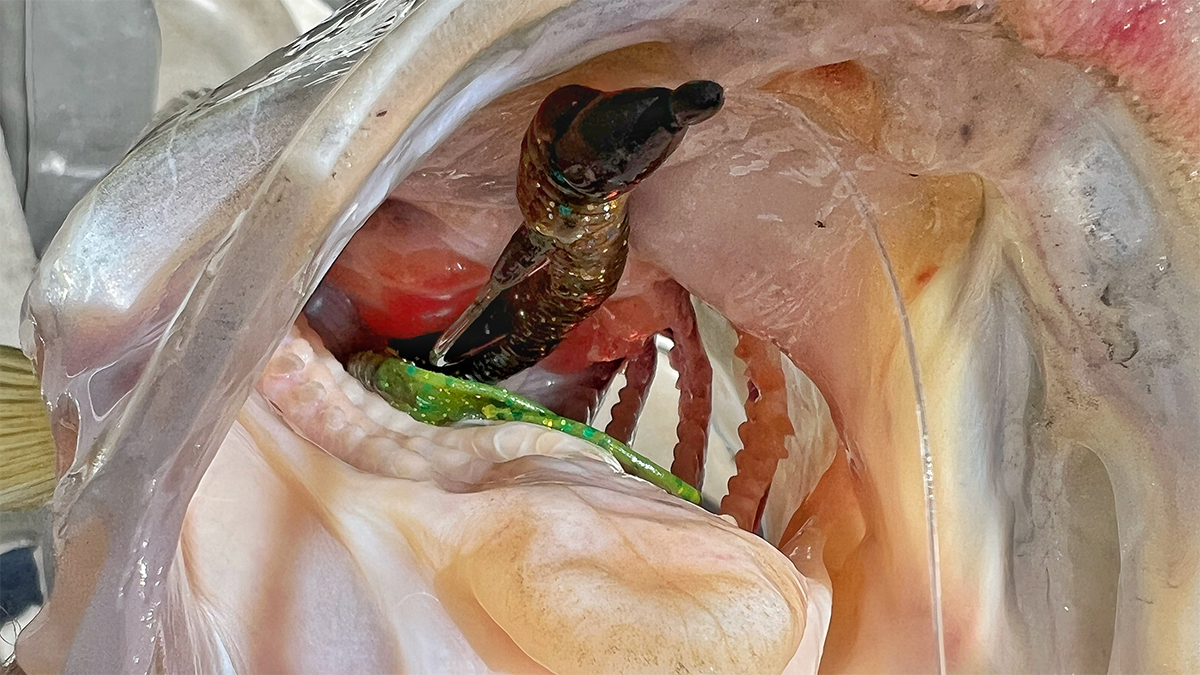If you’re new to bass fishing or perhaps you’ve been at it a while and you’re just looking to take someone else fishing for the first time, there are a handful of popular bass fishing baits that are almost guaranteed to get bit. But getting bit isn’t the only issue for someone with limited fishing experience; you’ll also want a bait that can be cast and fished easily.
Throwing in those last two criteria starts to narrow down the list of potential candidates when looking for a bass fishing bait for a beginner to throw. We’ve selected three baits anyone can get bit on to talk about that are also easy to throw and also fairly easy to fish.

Spinnerbait
One of the best baits for a beginner to throw, a spinnerbait can be fished on a simple, steady retrieve and still get bit. It’s a versatile bait as well that can be thrown around a variety of cover like brush, vegetation, docks and rocks. Its versatility doesn’t stop there, as a spinnerbait is also a great bass fishing bait to fish at varying depths.
By counting the bait down and slow rolling it, you can let a spinnerbait fall down a little deeper in the water column and reel it slowly to keep it at that desired depth. Spinnerbaits are also able to mimic multiple species of baitfish like bream and shad and they work in a wide spectrum of water colors, from super muddy to crystal clear.
To take advantage of this bait’s versatility, you’ll need to select a spinnerbait that has the right components for each scenario. Colorado blades shaped somewhat like a circle are better for muddy water; they give off a stronger vibration and a bigger flash, both of which help a bass find a bait in low-visibility situations. The resistance of the bigger blades also force you to fish the bait slower which helps in muddy water.
For the clear-water scenarios, you’re better off going with a spinnerbait with willow leaf blades that are longer and skinnier than their Colorado counterparts. These blades still give off some flash but offer less resistance which allows you to fish the bait faster and higher in the water column. If there’s a little color to the water, going with a Colorado/willow leaf combo works well.
Lipless crankbait
A lipless crankbait makes the short list for a lot of the same reasons a spinnerbait does. It’s a versatile bait that can be fished at a wide range of depths by varying the amount of time you let the bait fall and the speed of your retrieve. You can also select from a variety of colors to mimic anything from crawfish to shad.
The two treble hooks hanging from the belly of the bait make it super easy to hook up with fish, requiring little from the angler. You don’t have to worry about detecting a bite or setting the hook hard, which are often two things that are a little challenging for beginners. But the benefit of the easy hookup aspect of a lipless crankbait has a trade off; the treble hooks make the lipless crank more prone to hanging cover than a spinnerbait. So you’ll want to go with this bait more in open-water scenarios and stick with the spinnerbait around cover.
The exception here is submerged vegetation where there’s some sort of vegetation growing off the bottom that doesn’t make it all the way to the water’s surface. This is a great situation to throw a lipless crankbait.
You can let the bait get down near the vegetation and then snatch it free if it does hang up a bit. That sudden burst of action is often what triggers a strike.
Worm
This third bait was a toss-up between a Texas-rigged worm and a shaky head, so that’s why we just went with a worm in general. A Texas rig is a little more weedless, which means it can be fished around and through a wider range of cover better. A shaky head, however, is easier to rig and can be fished more efficiently a little deeper than a Texas rig sometimes. So really, you can pick your favorite or the one best-suited for the situation here and both are likely to get bit.
If I was rigging a worm for an angler to fish in less than 10 feet of water around laydown trees for instance, I’d opt for the Texas rig. I’d slide a bobber stopper on the line, a bullet weight and tie on an offset worm hook. Then I’d slide the point of the hook through the nose of the worm, come out after about 1/2 inch and slide that part over the eye of the hook, finishing the bait off by running the point of the hook through the midsection of the worm and tucking the tip back under soft plastic just barely to make it as weedless as possible.
With the shaky head, you just tie on the jighead and repeat the process of rigging the worm on the jighead similarly to how it was done with the Texas rig. Then I’d resort to the shaky head more when fishing over 10 feet deep around a clean or rocky bottom.
Fishing a worm one of these two ways gives you a presentation that is completely different form the spinnerbait and lipless crankbait. You’ll just drag the worm along the bottom. You’ll need to pay close attention to make sure you detect the bite and set the hook within three to five seconds of getting that bite to give the fish enough time to get the bait, but not enough time to let them swallow it.
In conclusion
All three of these baits could be fished on a spinning reel or a baitcaster, depending on what the angler is most comfortable with. A spinning reel is likely the easiest to use but a baitcaster is a fine choice for a beginner if you tighten the brakes down (the little circular knob on the handle side of the reel). Then simply cast as far as possible and slowly start backing off the brake to gain more distance as the angler becomes more comfortable.
If you’re wanting to cover water, the lipless crankbait and spinnerbait are the two best choices, opting for the spinnerbait when fishing around cover. If you need to slow down to get bit, go with the worm, fishing it on a Texas rig when shallow around dense cover and on a shaky head if you’re out a little deeper and not around a bunch of thick cover. Using these three baits, an inexperienced angler should be able to gain experience quickly and start getting bit right away.















